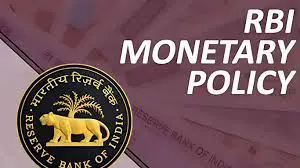
WHAT WE KNOW ABOUT THE GENERAL ELECTIONS OUTCOME
It is said that a lot changes in politics within 24 hours. In the Indian context, a lot changed in just 4 hours on Tuesday morning. Just 3 days back on Saturday, the exit polls had predicted a thumping win for the ruling NDA government. There was almost a consensus that the Modi government would win around 370 to 400 seats in the Lok Sabha. In fact, some of the agencies were bold enough to predict that this would be the first time since 1984 when a party would cross 400 seats. Out of that, the BJP itself was to get over 330 seats, which means it would have a comfortable majority on its own. Not surprisingly, the stock markets saw a frenetic rally on Monday, on expectations that reform agenda will go ahead.
Things soured for the ruling coalition rather quickly when the counting began on Tuesday. It was evident that the victory for the NDA would be nowhere close to what the exit polls had audaciously projected. By the afternoon, it was also clear that the ruling BJP would not reach 272 on its own, which means it will need the help of allies to form the government. Of course, at the end of the day, the ruling NDA combination did get about 292 seats, which entitles them to form the government. What markets are apprehensive is that the pulls and pressures of coalition politics could detract the government from its core reformist amalgam of growth and fiscal prudence. The Modi led NDA government is scheduled to take oath on June 08, 2024; a day after the monetary policy is presented.
WILL ELECTION OUTCOME IMPACT REFORMS OR MONETARY POLICY?
That is a tough question, but the experience of the past is that some of the most reformist budgets in India came when coalition governments or minority governments were in power. Take the Big Bang budget of 1991 or the Dream Budget of 1997; both were under coalition governments. Also, the FRBM act and fiscal prudence became a reality when the ruling government in 2004 was a coalition. More importantly, monetary policy in India has been largely independent of the government and the focus has been on price stability followed by growth. However, there are legitimate questions on the future direction of monetary policy.
For instance, one concern in the market is whether the coalition nature of the government will force a tilt towards populist spending? The other question is whether the collaboration that was visible in the previous years between the government and the RBI, especially on handling food inflation, would still continue in a coalition set up. Thirdly, there is an apprehension that the RBI may have a tougher task managing interest rate cuts in the future if a higher fiscal deficit target or a higher borrowing program puts pressure on rates. These are early days, but these questions are top of the mind when it comes to the nature and colour of upcoming monetary policies.
HOW MACROS SHAPED UP SINCE THE APR-24 MONETARY POLICY?
Since the April 2024 policy, the big news was the general elections outcome. However, there were other important macro data updates too.
One more factor that the RBI will be closely tracking is the crude oil prices. After touching a high of $90/bbl, the Brent Crude oil prices slipped to $77/bbl. The RBI has less to worry about imported inflation and that would figure in its calculations of interest rates trajectory of the central government. In this background, what can we expect from the RBI in the upcoming monetary policy on June 08, 2024.
WILL THE RBI ATTEMPT RATE CUTS IN JUNE 2024
RBI has kept rates at the current level of 6.5% since February 2023. Effectively, the June 2024 could be the eighth polity in succession when the RBI is unlikely to tamper with the rates. The reasons are not far to seek. The government is yet in formation mode and the RBI would still prefer to wait for the full budget to be presented in July 2024. That would give the RBI a good fiscal perspective, so it can base its monetary policy on that.
RBI has stated in, no uncertain terms, that rates had peaked out; which means the only way the rates can go from here is downward. At a theoretical level, there are 2 justifications for a rate cut by the RBI. Firstly, inflation has stabilized under 5% while repo rates are still about 135 bps above the pre-COVID rates. That makes a case for rate cuts. Secondly, when the GDP growth story is so good, the RBI would rather hold back its rate cut ammunition for a tough day. In the midst of fluid market conditions, the RBI may ideally keep status quo.
IS IT TIME FOR THE RBI TO CHANGE THE MONETARY STANCE?
Among the six MPC members, Jayanth Varma has opposed static rates and holding status quo on monetary policy. According to Varma, the situation is ripe for a 25 bps rate cut and changing the stance of the monetary policy. Currently, the stance of the monetary policy is “gradual withdrawal of accommodation.” Varma is of the view that such a stance is out of sync with the market realities, where liquidity is already in deficit for some time. Of course, the liquidity deficit has come down and is likely to turn into a surplus post the elections. However, the RBI argument has been that changing the monetary policy stance to neutral at this juncture had two risks. It could revive inflation and also make the job of transmission of rates through the banking system tougher.
While the RBI is likely to remain steady on rates and hold the monetary stance, there is a possibility that the RBI may give guidance on a likely timetable to shift the monetary policy stance from “Gradual withdrawal of accommodation” to “Neutral.” Also, this shift in monetary stance is likely to precede any cut in repo rates, so the markets will have enough advance signals before the rates are actually cut. In the June monetary policy, the RBI is unlikely to cut rates or change the monetary stance. That is due to the fluid political equations and the full budget still to be presented. However, the RBI may make a small start by giving guidance on when it will shift the monetary stance.
RBI WILL NOT CHANGE INFLATION ESTIMATES FOR FY25
The FY25 inflation target was pegged at 4.5%, a good 90 bps below the FY24 inflation level of 5.4%. That means, the RBI has already pegged a sharp fall in inflation in FY25. The question is whether the RBI would look to cut the estimates for FY25 from the current 4.5% or would it prefer to hike the inflation estimate at this juncture, considering the long term repercussions of the Red Sea crisis? There are several factors that would go into the RBI calculations. Firstly, the Red Sea crisis continues to fester, but crude prices in the Brent market are down from $90/bbl to $77/bbl. Hence the short term risks to imported global inflation is quite limited.
Secondly, there is a possibility that coalition politics could impose a higher than expected fiscal deficit and that could spike inflation, but for that you must wait for the final budget announcement in July this year. However, what will work in favour of inflation control is that IMD has projected a normal monsoon this year. That means, we are looking at rainfall between 96% and 104% of the long period average (LPA). We need to wait and watch. The RBI is unlikely to make any changes to inflation till the monsoon data comes in and the food inflation visibility is clear. By then, the full budget will also be presented.
FY25 GDP UPGRADE IS EMINENTLY POSSIBLE
The one thing that could possibly happen in the June monetary policy is a hike in the GDP guidance for FY25. In FY24, the GDP growth at 8.2% was 120 bps above the RBI estimate and 60 bps above the NSO estimate. For FY25, the RBI has pegged growth at 7.0%, but it is very likely that the actual GDP growth number could be closer to 7.5%. The 3-year moving average of growth for FY24 has been the highest in the last decade at 8.3%. Also, with the bank credit growing at a robust 19.5% and the incremental capital output ratio (ICOR) at 4.3; the gross investment rate at 33.3% could translate into GDP growth of 7.5% or more. Whether the upgrade happens now or after the budget is a technical decision, but the GDP is surely due for an upgrade, and it could happen in June 2024 itself.
RBI IS LIKELY TO STAY AMBIGUOUS ON RATE GUIDANCE
That is the moral of the story. Don’t expect any rate guidance from the RBI at a time when the political equations are fluid and the full budget is yet to be presented. The immediate concern for the RBI is managing system liquidity. With the government shifting to just in time (JIT) model for all its cash management and payments, the banking liquidity is likely to become very dependent on the government spending. That is the challenge that RBI would be more concerned about and the RBI would want to stabilize liquidity before even attempting any guidance on rates trajectory.
It would be premature to expect any RBI guidance on rate cuts. The RBI would want to see the experience of global central banks like ECB and Fed before it embarks on rate cuts. June 2024 could largely be a status quo policy, with an outside chance of a GDP growth upgrade.
Related Tags

Invest wise with Expert advice
![]() IIFL Customer Care Number
IIFL Customer Care Number
(Gold/NCD/NBFC/Insurance/NPS)
1860-267-3000 / 7039-050-000
![]() IIFL Capital Services Support WhatsApp Number
IIFL Capital Services Support WhatsApp Number
+91 9892691696
IIFL Securities Limited - Stock Broker SEBI Regn. No: INZ000164132, PMS SEBI Regn. No: INP000002213,IA SEBI Regn. No: INA000000623, SEBI RA Regn. No: INH000000248

This Certificate Demonstrates That IIFL As An Organization Has Defined And Put In Place Best-Practice Information Security Processes.